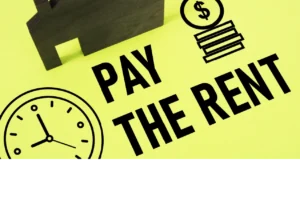Credit reports include information about a rental applicant’s payments on credit cards and loans

How to Understand Credit Reports When Screening Potential Tenants
Highlights
- Credit reports include information about a rental applicant’s payments on credit cards and loans
- Credit reports can help identify red flags like overdue payments, delinquent accounts, collection items, and bankruptcies
- AAOA.com partners with TransUnion to provide you with an overview of a renter’s credit history to help you screen potential tenants
- The Fair Credit Reporting Act allows renters to know if their credit report is being considered against them
Introduction to Credit Reports in Tenant Screening
Screening tenants is an important step in the leasing process to minimize the risk of late rent payments, evictions, and property damage. A credit report is a component of a tenant credit check that provides an overview of an applicant’s financial activity. A credit report is essential in screening tenants; reviewing an applicant’s credit report can help you predict the likelihood of on-time rent payments.
AAOA.com partners with TransUnion to offer seamless tenant screening, including a comprehensive credit report and background check. This one-stop screening can relieve the stress of filtering through tenant applications.
What Is a Rental Credit Report?
A credit report summarizes a rental applicant’s payment history and any active accounts. It includes the applicant’s total debt, payment history, and any active lines of credit.
Components of a credit report
The specific format of a credit report varies depending on the credit bureau it comes from, but all credit reports contain the same general information. A credit report includes personal information, employer history, accounts, and credit inquiries.
A credit report’s personal information and employer history sections help verify a rental applicant’s identity. Personal information includes a rental applicant’s name, Social Security number, date of birth, address, and phone number. Employer history may not be comprehensive, but it can still help verify an applicant’s identity and ability to pay rent.
The accounts section of a credit report provides details about an applicant’s payment behavior on credit cards and loans. The accounts section is divided into Adverse and Satisfactory accounts. Adverse Accounts include derogatory marks like delinquent accounts or collection items and show up to seven years of delinquent history. The Satisfactory Accounts section shows payment history on current or paid-in-full accounts, including late payments on open credit cards or loans.
The credit inquiries section shows up to two years of hard credit inquiries that an applicant authorized when applying for a credit card or loan. Hard inquiries decrease a credit score slightly because they show that a loan applicant is taking on more debt. Credit reports do not show soft credit inquiries a person pulled for their own reference.
Screen Your Tenant Today!
Gain peace of mind with AAOA’s credit, criminal, and eviction reports.
How to Read a Tenant’s Credit Report
Understanding credit scores
A credit score is a numeric rating of a renter’s financial responsibility, largely impacted by debt repayment. While each of the three credit bureaus–Equifax, Experian, and TransUnion—calculate credit scores differently, they all consider similar factors. Generally, credit scores consider payment history, length of credit history, types of credit, the number of active accounts, and the ratio of used credit to available credit.
A credit score ranges from 300 to 850, with 850 being the best possible score. A credit score of 690 is generally considered “good,” while anything below 629 is considered a bad credit score.
It’s important to understand that while “credit report” and “credit score” are often used interchangeably, they are different. According to the Consumer Financial Protection Bureau, a credit score is a numeric summary of a renter’s credit history. In contrast, a credit report is a detailed account of a renter’s credit activity.
Analyzing payment history
Payment history is one of the main factors that impact a credit score, and a credit report shows payment history on credit cards, loans, and other accounts.
Payment history will show:
- Whether credit cards, loans, and other accounts were paid on time
- Any overdue payments
- The amount of money still owed on delinquent accounts or collection items
- How much time has passed since delinquent accounts or collection items were introduced
- Public bankruptcy records
A rental applicant’s payment history can give you an idea of how likely they are to pay rent on time. If an applicant’s payment history shows multiple overdue accounts and derogatory marks, they may be a riskier tenant than an applicant with a perfect payment history.
Assessing debt-to-income ratio
While a debt-to-income ratio is not included on a credit report, it’s important to consider when screening applicants. Since your rental application likely requires applicants to disclose their gross monthly income, you should be able to easily calculate their debt-to-income ratio with the information provided on their credit report.
According to the Consumer Financial Protection Bureau, a debt-to-income (DTI) ratio is calculated by recurring monthly debt divided by gross monthly income. Chase says lenders consider a good DTI ratio at or below 43%.
A high DTI ratio signals that an applicant may be unable to take on more debt, while a low DTI ratio shows that an applicant can afford new monthly payments. DTI is typically used to help lenders determine a loan applicant’s risk level, but DTI can also help landlords assess whether a rental applicant can afford monthly rent payments.
What Should Landlords Look for in Credit Checks?
Key indicators of a good tenant include a credit score of 690 and above, a debt-to-income ratio at or below 43%, and a reliable payment history. However, credit reports can reveal more than an applicant’s credit activity.
Red flags in credit reports
Credit reports help predict an applicant’s rent payment behavior and identify potential warning signs that may require further investigation. Some red flags include long payment gaps, significant debt, delinquent accounts, and derogatory marks such as collections, repossessions, or bankruptcies.
Fair Credit Reporting Act
The Fair Credit Reporting Act (FRCA) gives renters the right to know if anything in their credit report is being considered against them. This allows applicants to dispute inaccuracies before you decline their rental application.
Adverse action notice
While credit checks can help you avoid problematic renters, applicants are entitled to know that something in their background check was significant enough to deny their application. Adverse action notices are a best practice to implement to remain transparent and professional.
An adverse action letter is not a rejection letter. An adverse action letter gives an applicant the opportunity to dispute any incorrect information on their credit report or negotiate concessions with you. You may be able to come to an agreement and require a co-signer or guarantor on their lease or charge a higher security deposit.
Screening potential tenants is a crucial step in the leasing process, and understanding how to read a credit report can help you avoid tenants who don’t pay their rent on time. By analyzing a credit report and being transparent with applicants, you can find high-quality tenants and maintain professionalism.
Source: Apartments.com













 Accessibility
Accessibility